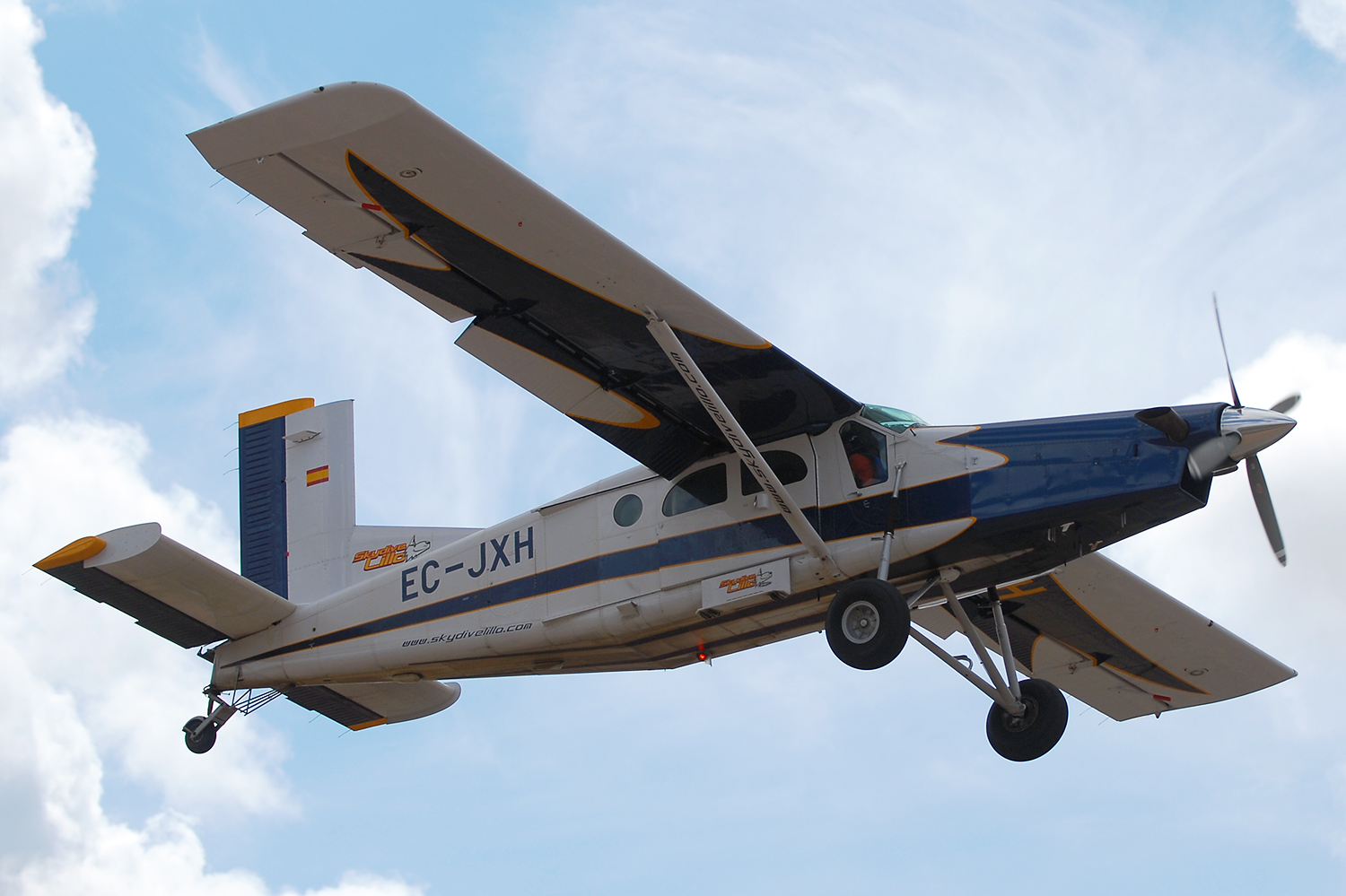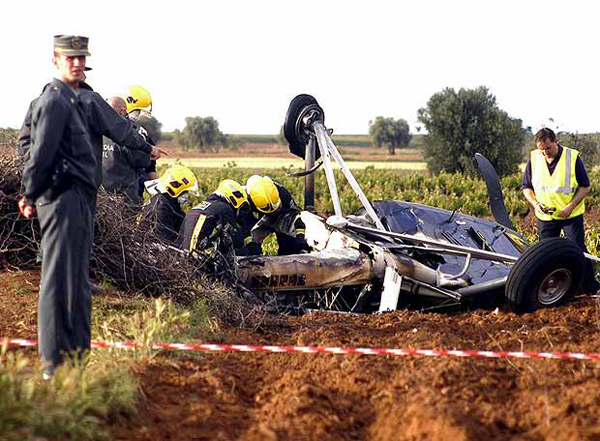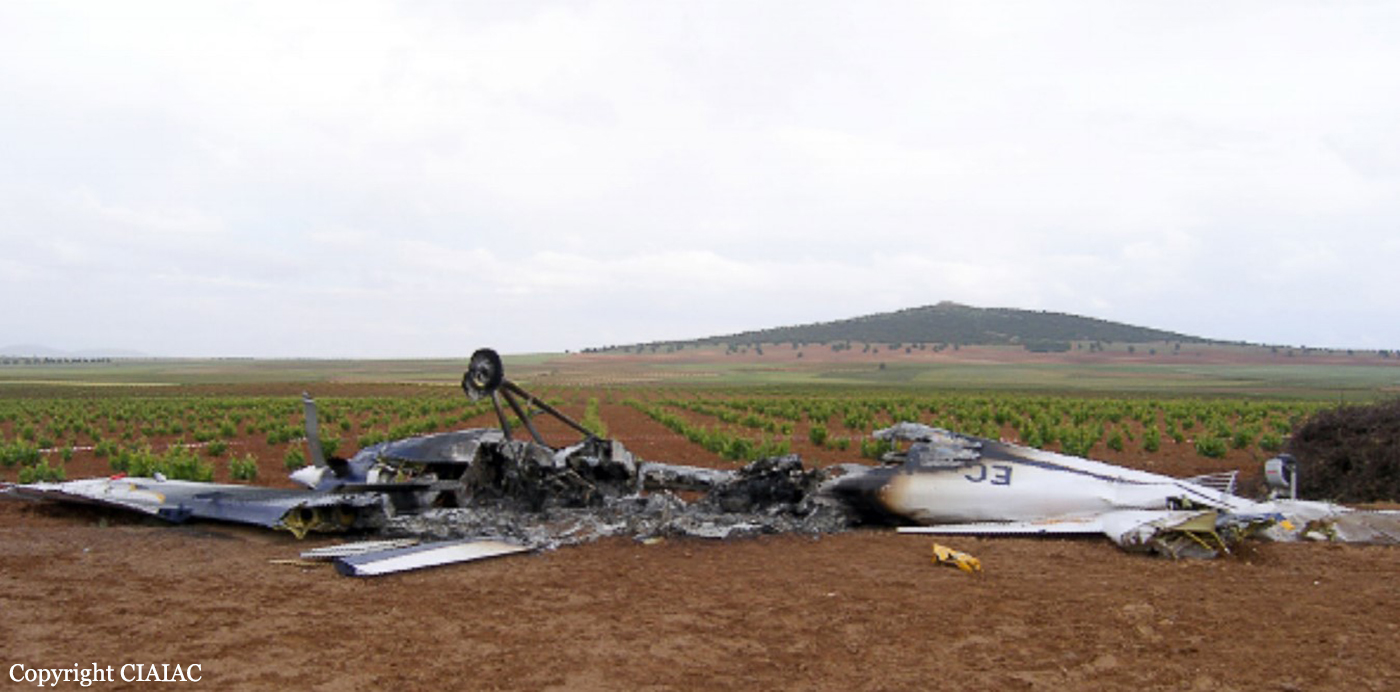Country
Crash of a Pilatus PC-6/B2-H4 Turbo Porter in Muaritan: 2 killed
Date & Time:
Apr 25, 2012 at 1730 LT
Registration:
PK-VVQ
Survivors:
No
Schedule:
Balikpapan - Balikpapan
MSN:
965
YOM:
2009
Crew on board:
1
Crew fatalities:
Pax on board:
1
Pax fatalities:
Other fatalities:
Total fatalities:
2
Captain / Total hours on type:
81.00
Aircraft flight hours:
2397
Aircraft flight cycles:
3466
Circumstances:
The Pilatus Porter PC-6 aircraft operated by PT. Puji Astuti Aviation (Susi Air) registered PK-VVQ on Areal Survey Flight, departed from Sepinggan-Balikpapan to Melak Area on 25 April 2012 at 0440 UTC (Universal Time Coordinate) or 1240 LT. There were one pilot and one pasenger on board, the estimate flight endurance was seven hours. At 0505 the aircraft reported leaving Balikpapan Approach. At 0910 the aircraft was reported to Melak Radio on radial 060 at the altitude of 3,500 feet, and that it would be leaving Survey after a further twenty minutes. Melak Radio reported that the aircraft lost contact at 0930. At 0922 a text message was sent by the passenger to his employer stating “Run out of fuel, landing on road”. The Search and Rescue Bureau informed that a distress signal was tetected on 1025 at the position of 00 25’.02” N 116.02’.48”E. On 26 April 2012 at 1730 UTC the aircraft was found in Muaritan – Kecamatan Tabang, Kutai Karta Negara at the position 00 25’.03” N 116.01’.55”E. The aircraft was substantially damaged, the pilot and the passenger were fatally injured.
Probable cause:
The engine flamed out caused by lack of fuel supply from main fuel tank to the engine. The pilot likely fixated on the survey flight execution and lost awareness of his fuel situation. The transferring of fuel from the auxiliary tank was not performed during the flight as required. The combination of inexperience of the pilot related to survey flying, fatigue and the highly demanding survey operator contributed to this sequence of events.
Final Report:
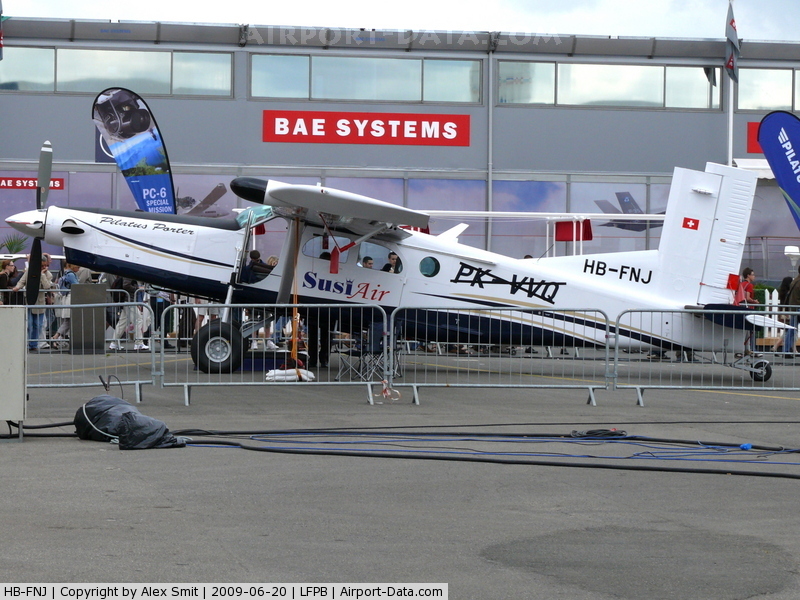
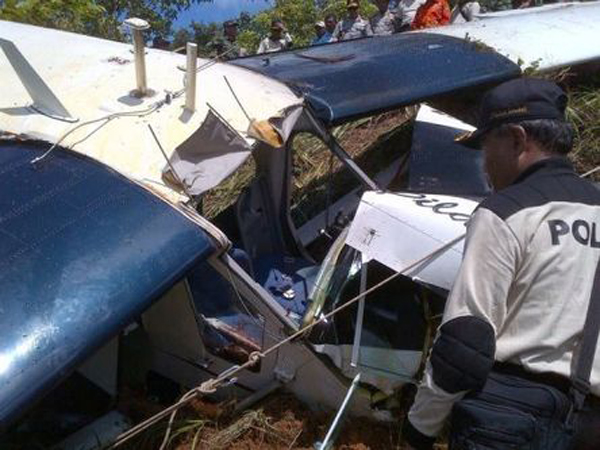
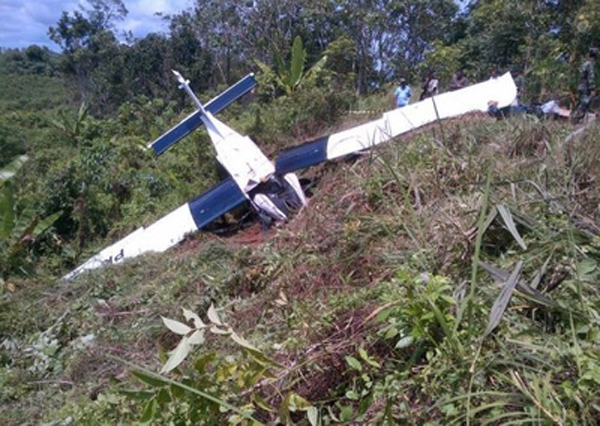
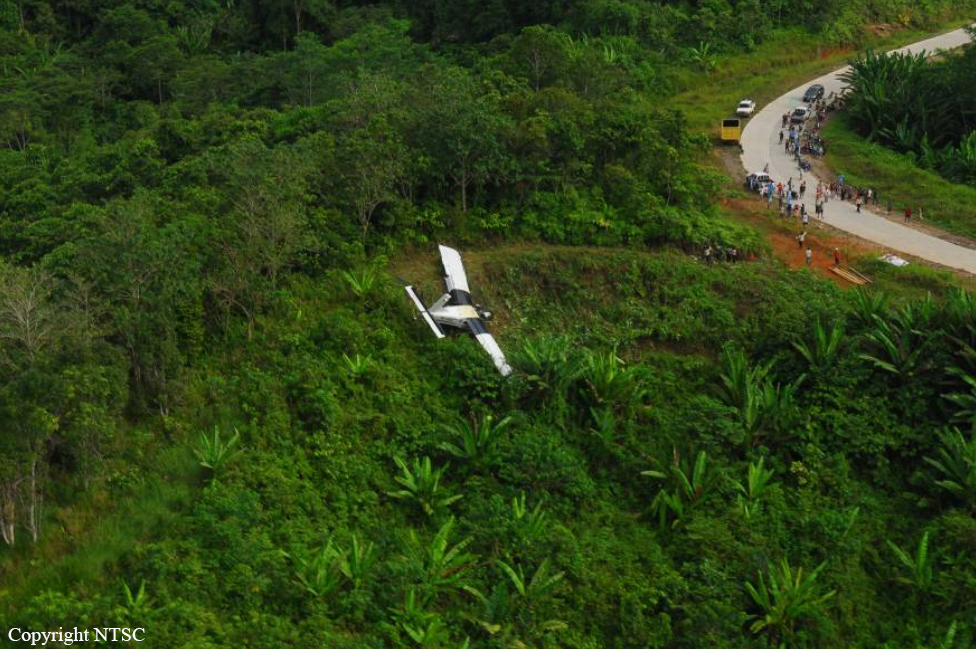
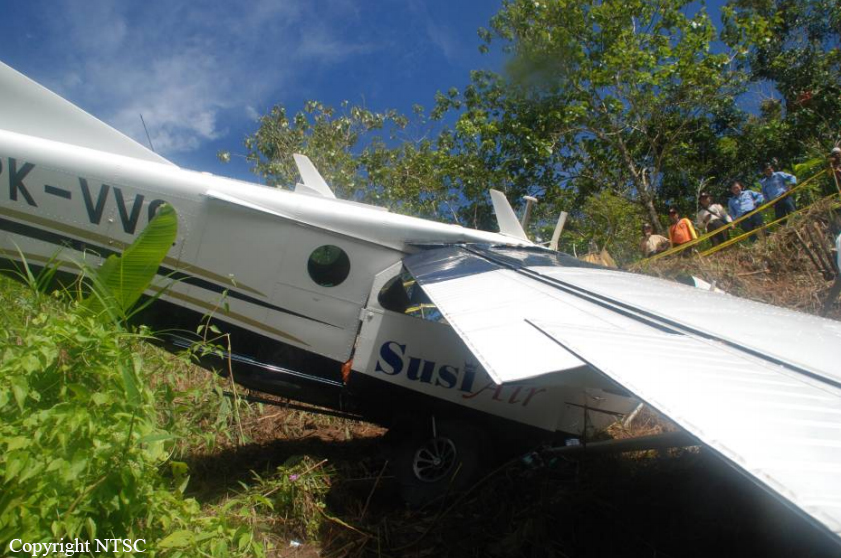
Crash of a Pilatus AU-23A Turbo Porter in Phanom Thuan
Date & Time:
Mar 23, 2012 at 1500 LT
Registration:
74-2082
Survivors:
Yes
Schedule:
Prachuap Khiri Khan - Prachuap Khiri Khan
MSN:
2082
YOM:
1974
Crew on board:
2
Crew fatalities:
Pax on board:
1
Pax fatalities:
Other fatalities:
Total fatalities:
0
Circumstances:
The single engine aircraft departed Prachuap Khiri Khan for a local training flight, carrying two pilots and one engineer. En route, the crew encountered technical problems with the engine and was forced to attempt an emergency landing in a field located in the Phanom Thuan District. The aircraft was damaged beyond repair while both pilots were uninjured. The engineer was slightly injured.
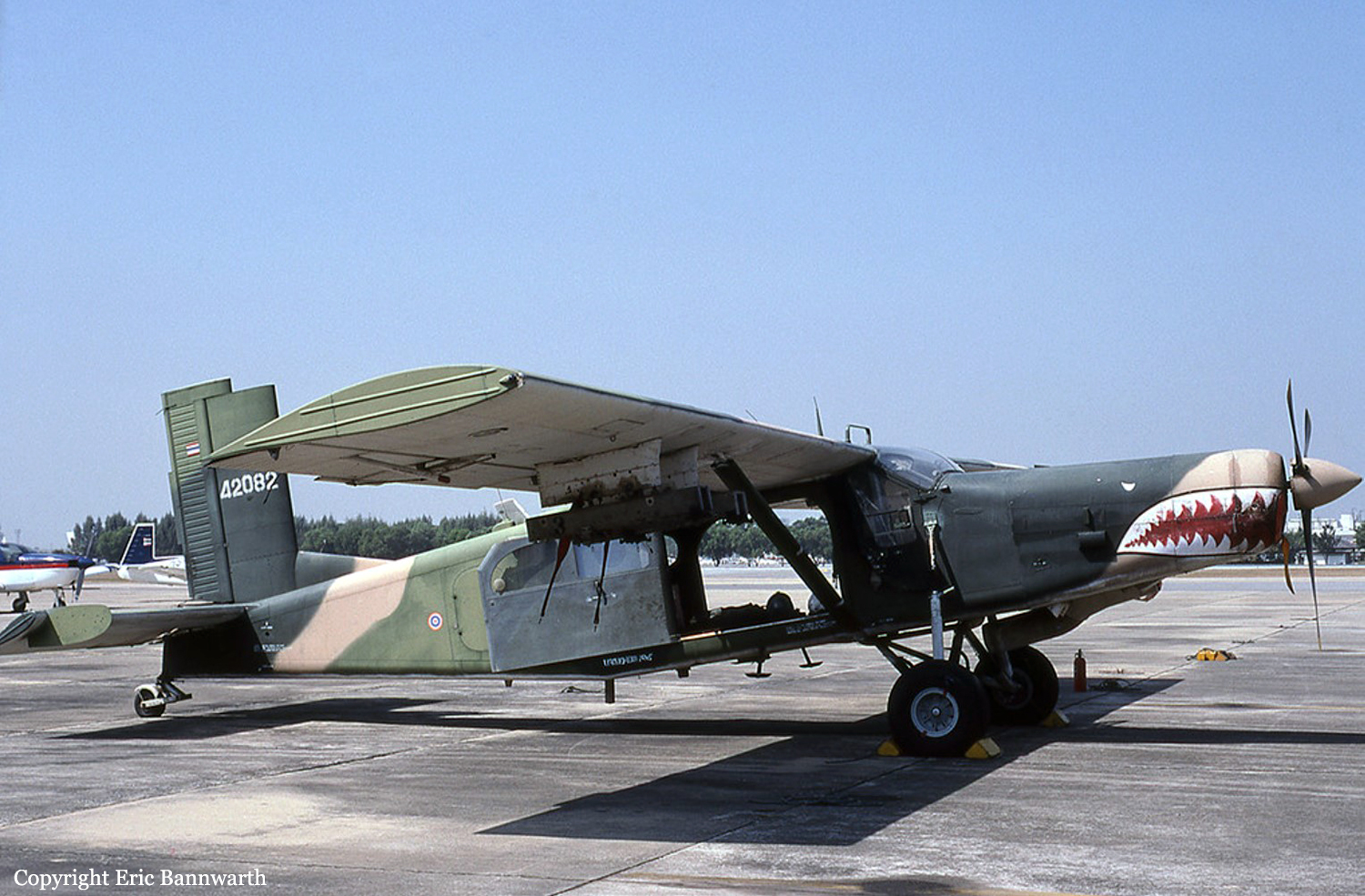
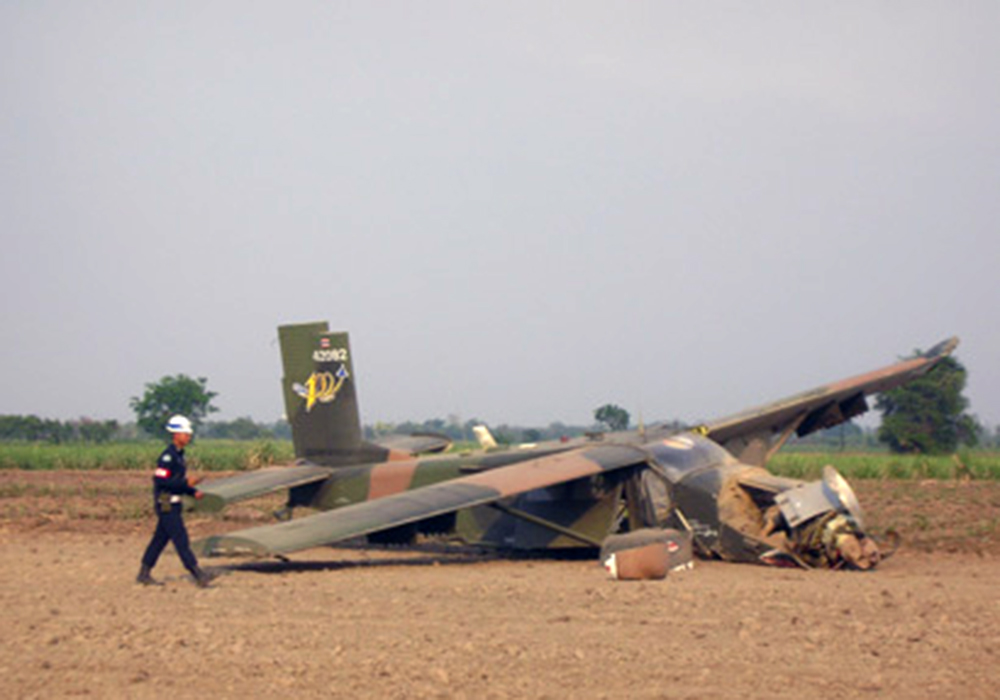

Crash of a Pilatus PC-6/B2-H4 Turbo Porter near Yahatma: 3 killed
Date & Time:
Sep 22, 2011 at 1313 LT
Registration:
PK-UCE
Survivors:
No
Schedule:
Pagai - Wamena
MSN:
943
YOM:
2004
Crew on board:
1
Crew fatalities:
Pax on board:
2
Pax fatalities:
Other fatalities:
Total fatalities:
3
Captain / Total hours on type:
2647.00
Aircraft flight hours:
5774
Aircraft flight cycles:
6662
Circumstances:
On 22 September 2011, a PC 6 Pilatus Porter aircraft, registration PK-UCE was being operated by Yayasan Jasa Aviasi Indonesia (YAJASI) departed from Pagai to Wamena. The aircraft departed at 0403 UTC1 (1303 LT) and estimated to arrive at Wamena was at 0436 UTC. Aircraft cruise at altitude of 10,000 feet and conducted under Visual Flight Rules (VFR) and followed the visual route via North Gap corridor, which one of visual route to Wamena. Prior to enter the North Gap corridor at time 0413 UTC, the pilot sent a message via a system they called AFFIS to the company Flight Following Officer at Sentani Airport, which was the operation base. The pilot also sent a blind transmission message through Wamena Tower radio frequency. This was local procedure, to submit the message consists of position, altitude and destination to make the other aircraft pilots aware each other. As in the intern YAJASI flight following procedure, pilot should send message when the flying passes the North Gap corridor. In this flight, until the normal elapsed time, the pilot did not send any message to their Flight Following Officer at Sentani that the flight has passed the North Gap corridor. Since there was no message nor radio contact from the pilot until the ETA in Wamena, the Flight Following Officer at Sentani informed to the other personnel at the operation base, and alarmed to the other YAJASI aircraft which were flying in that area to start search the PK-UCE. Some other aircrafts which were flying in the vicinity also contacted to search the PKUCE. PK-UCE was found in mountain location adjacent to Pass Valley airstrip. The accident site was at coordinate S 030 54’ 54.4’’, E 1390 02’ 24.3”, the aircraft was hit the trees and the ground where the elevation was about 7500 feet , the propeller blades was not on feather and bent rearward, the left wing was broken and the aircraft stopped on heading about 85°.
Probable cause:
The pilot decided to descend from the cruise altitude 10000 feet to penetrate the area of marginal weather was most likely not as what his perceive. The pilot avoided the cloud to the left of the VFR route guidance and most likely that the space available was less than the requirement stated for the Weather Minimum class F.
Final Report:
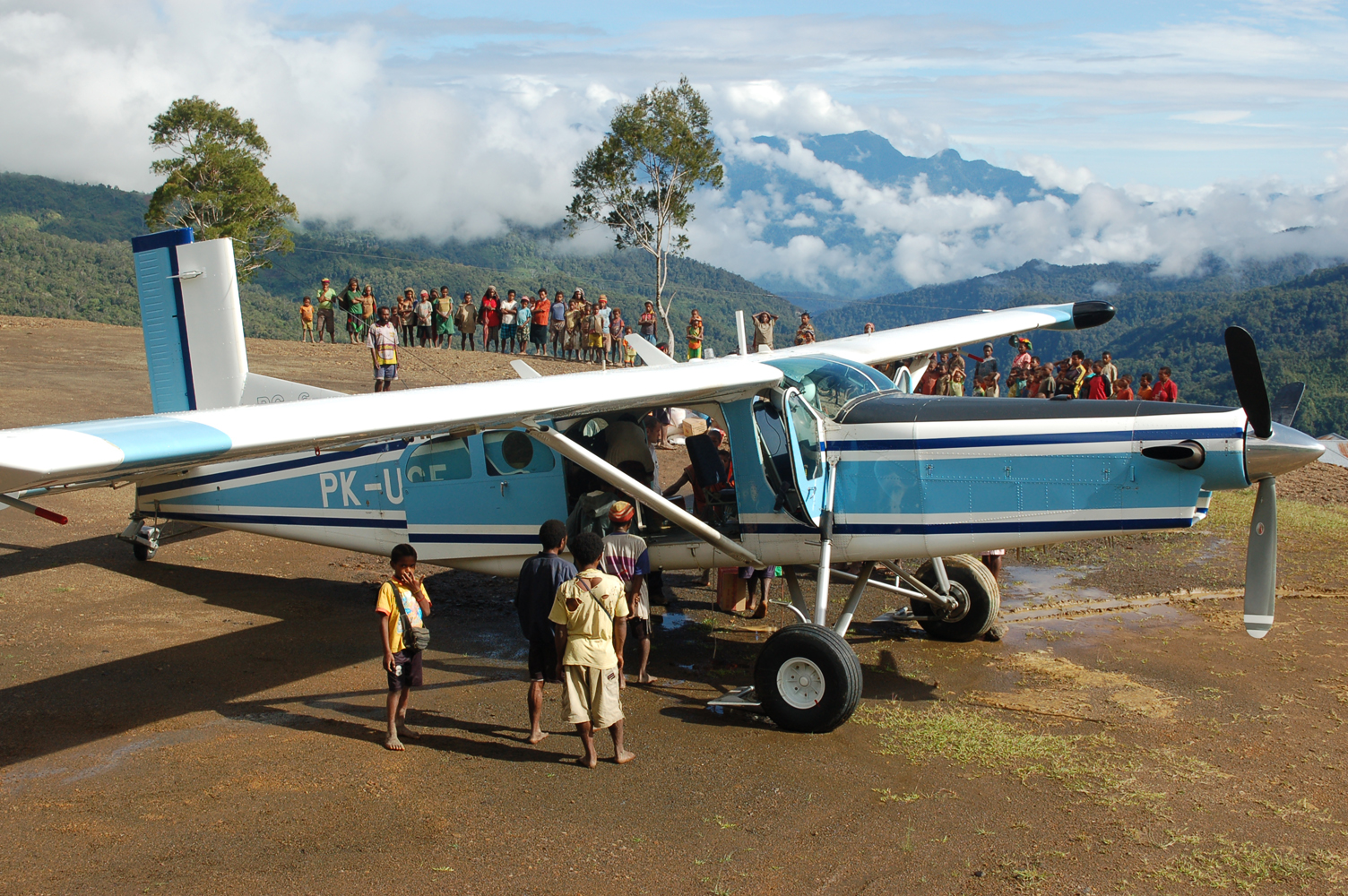
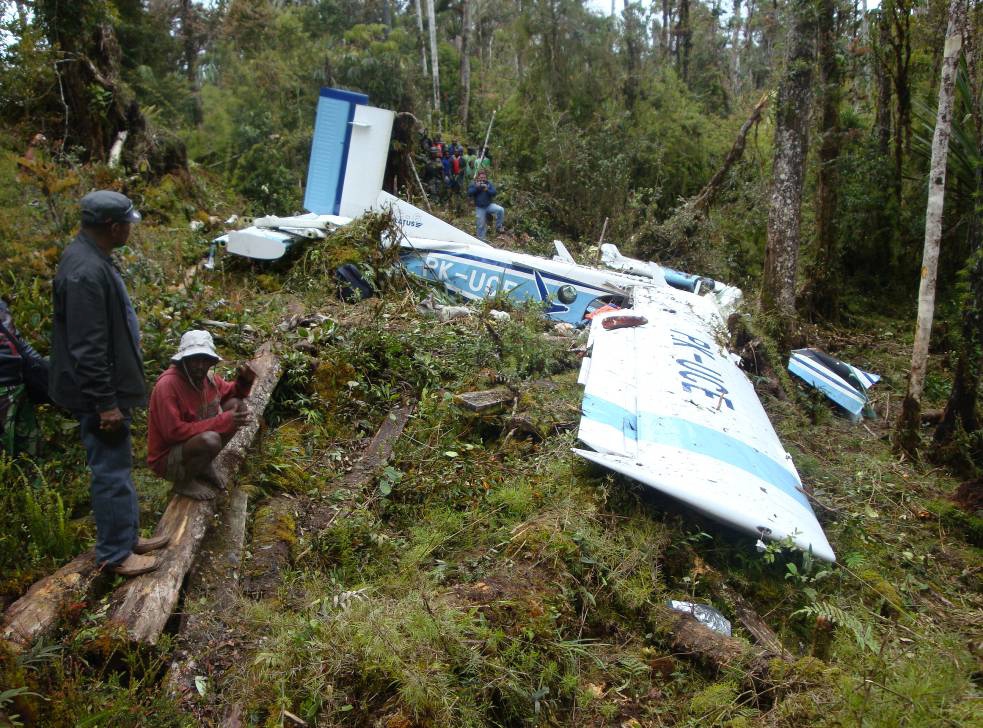
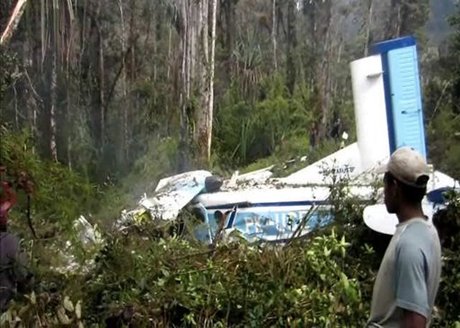
Crash of a Pilatus PC-6/B2-H4 Turbo Porter in Ravenna
Date & Time:
Apr 2, 2011 at 1530 LT
Registration:
D-FATA
Survivors:
Yes
Schedule:
Ravenna - Ravenna
MSN:
894
YOM:
1994
Crew on board:
1
Crew fatalities:
Pax on board:
10
Pax fatalities:
Other fatalities:
Total fatalities:
0
Aircraft flight hours:
5797
Circumstances:
The single engine aircraft departed Ravenna-La Spreta Airport on a local skydiving mission, carrying nine skydivers, one child and one pilot. After takeoff from runway 08, while climbing to an altitude of about 50 feet, the aircraft turned to the left then lost height and crashed in an open field located 380 metres from the runway end. All 11 occupants were injured, five of them seriously. The aircraft was destroyed.
Final Report:
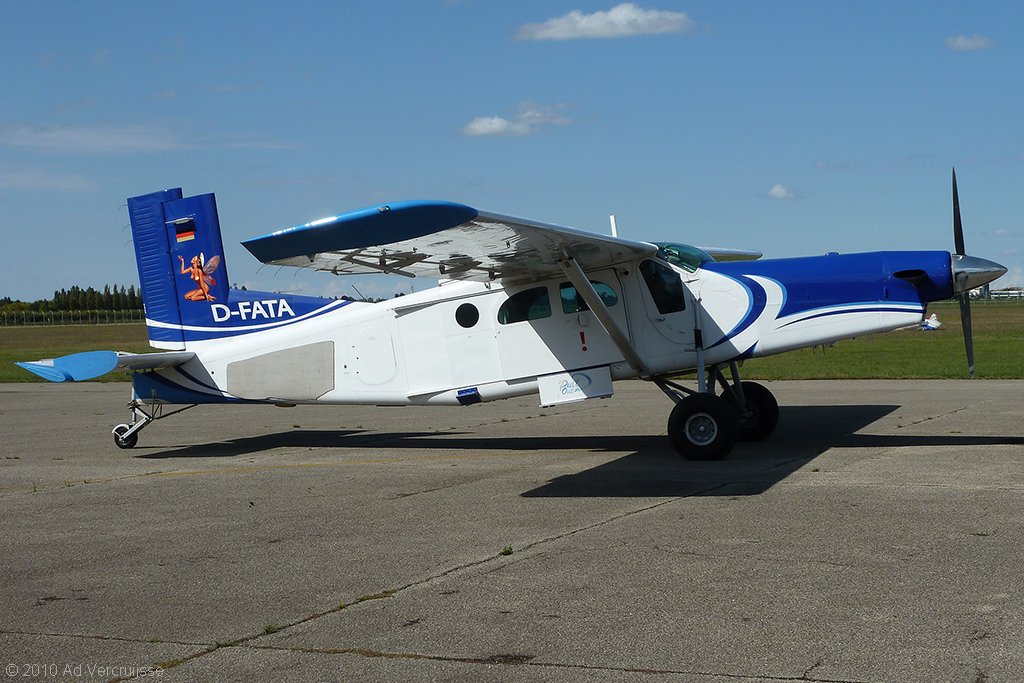
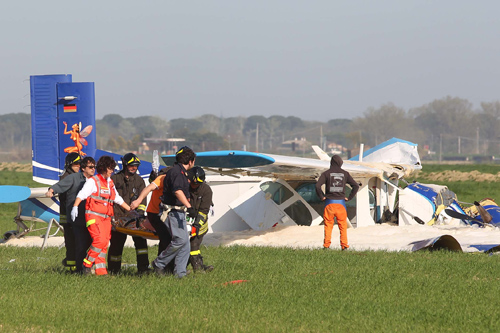
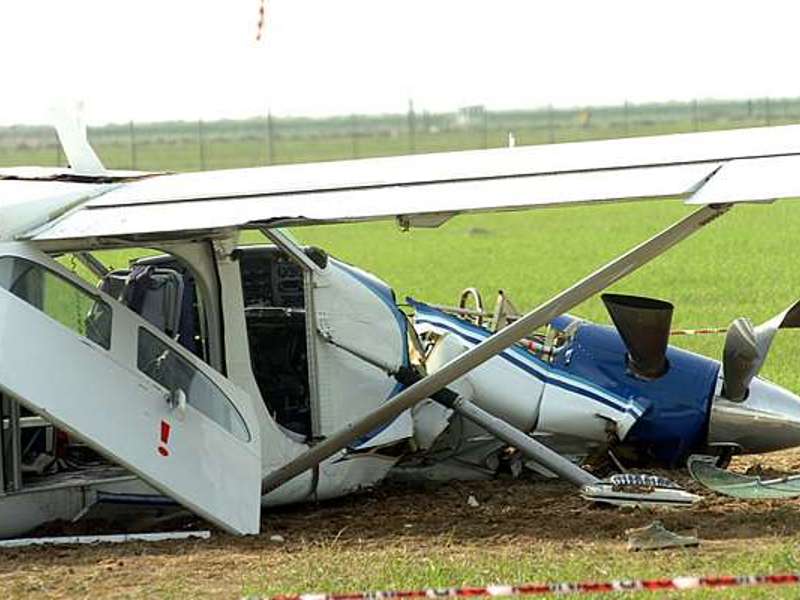
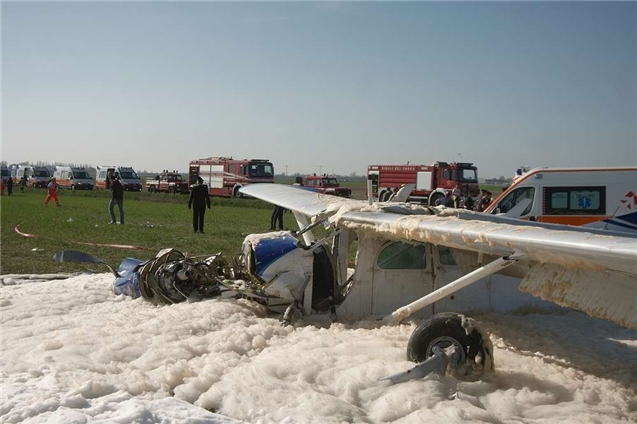
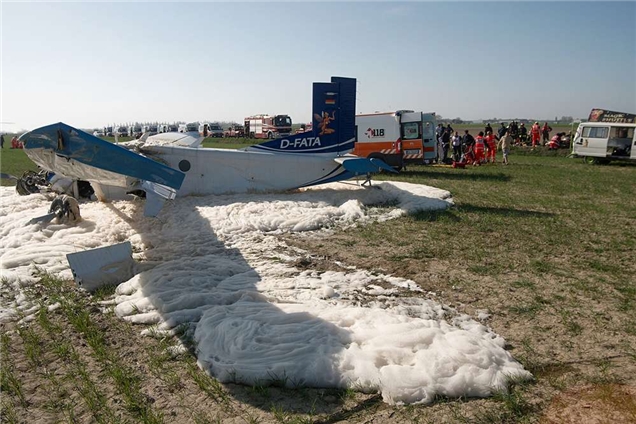
Crash of a Pilatus PC-6/B2-H4 Turbo Porter near Mulia: 11 killed
Date & Time:
Apr 17, 2009 at 1015 LT
Registration:
PK-LTJ
Survivors:
No
Schedule:
Ilaga - Mulia
MSN:
959
YOM:
2008
Crew on board:
2
Crew fatalities:
Pax on board:
9
Pax fatalities:
Other fatalities:
Total fatalities:
11
Captain / Total hours on type:
1412.00
Aircraft flight hours:
542
Circumstances:
On the morning of 17 April 2009, a Pilatus PC-6/B2-H4 Turbo Porter aircraft, registered PK-LTJ, operated by PT. Mimika Air, charter flight from Ilaga to Mulia in the Puncak Jaya District of Papua. The Mimika Local Government owned the aircraft. There were 11 people on board; one pilot, one observer, and nine passengers comprised of eight adults and one infant. The aircraft was also carrying National Government election boxes. The flight in accordance with the visual flight rules was estimated to take 18 minutes. There was no record of communication with the aircraft during the flight. Two minutes after the estimated time of arrival, when the Porter had not arrived, a search was commenced. On 18 April, search aircraft located the wreckage of the Porter at an elevation of about 12,000 feet on Mt Gergaji. The location was on the direct track between Ilaga and Mulia. The aircraft impacted the ground in an inverted attitude, and was destroyed by the impact forces and the post-impact fire. All occupants were fatally injured. The weather in the valleys along the route was mostly clear, with cloud on the mountains. The route flown by the pilot was the direct track, which passed over a mountain range, with a high peak adjacent to, and west of the track at about the midway point, at 13,700 feet. The investigation determined that it was likely that the pilot had flown the aircraft into cloud and lost control of the aircraft in instrument meteorological conditions. The impact signature was consistent with uncontrolled flight at the time of impact. This probably resulted from the pilot becoming spatially disoriented after entering cloud.
Probable cause:
The pilot may not have had adequate knowledge of the route and weather conditions, and may have been relying on Global Positioning System navigation, and was attempting to climb on the direct track over Mt Gergaji. It was likely that the pilot became spatially disoriented after entering cloud while operating under visual flight procedures, leading to a loss of control and uncontrolled impact with terrain.
Final Report:
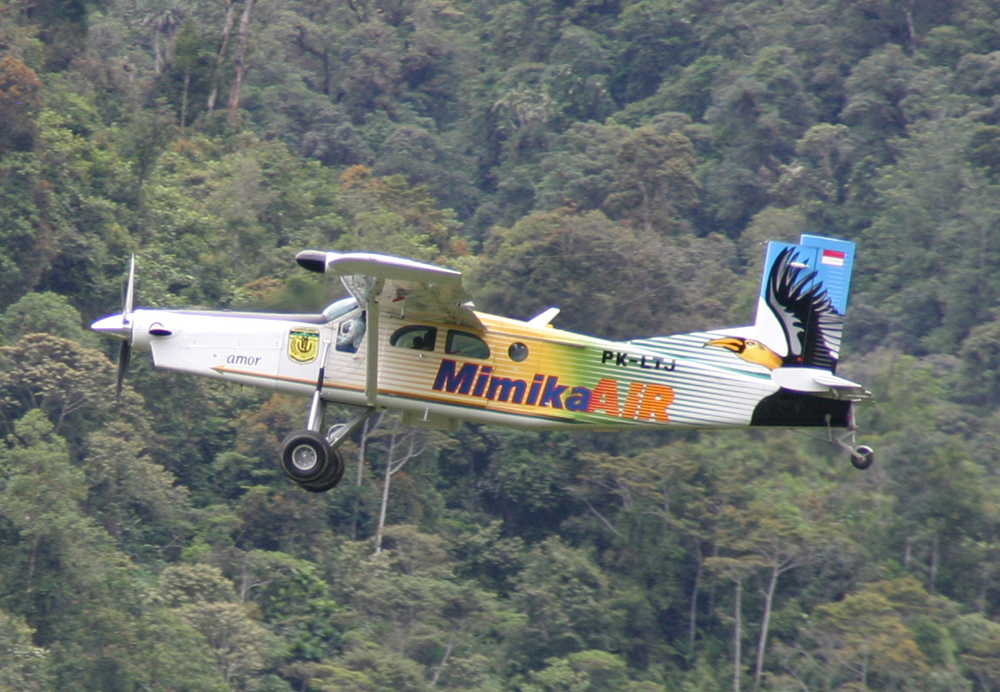
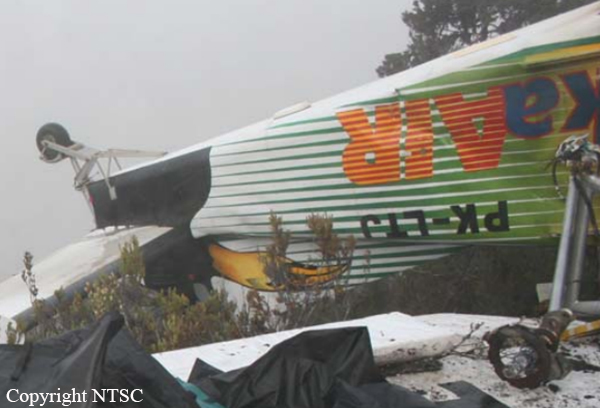
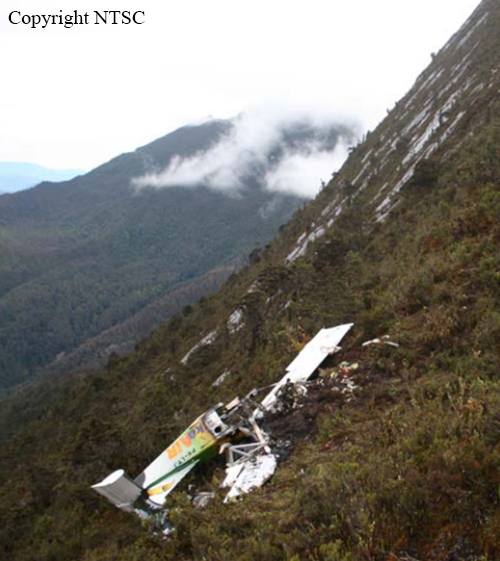
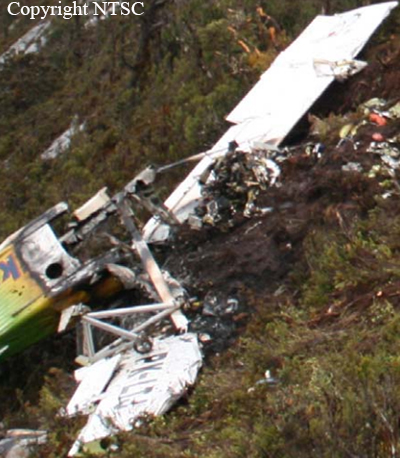
Crash of a Pilatus PC-6/B2-H4 Turbo Porter near Ndundu: 1 killed
Date & Time:
Aug 9, 2008 at 2000 LT
Registration:
PK-RCZ
Survivors:
No
Schedule:
Wamena - Ndundu
MSN:
903
YOM:
1994
Crew on board:
1
Crew fatalities:
Pax on board:
0
Pax fatalities:
Other fatalities:
Total fatalities:
1
Captain / Total hours on type:
2275.00
Aircraft flight hours:
6321
Circumstances:
On the Saturday 9 August 2008, a Pilatus Porter PC-6 B2-H4 aircraft, registered PK-RCZ, operated by AMA (Association of Mission Aviation) on a charter flight from Wamena, Papua, to Taive II, Papua departed at 1000 UTC. The aircraft was to pick up a medical patient from Taive II. After landing and unloading cargo at Taive II, the aircraft departed from Taive II for NduNdu, Papua, at 1106 with an estimated time of arrival of 1113. The flight was to be operated in accordance with the visual flight rules (VFR), remaining clear of cloud and navigating visually. When the aircraft had not arrived by 1213, the Wamena authorities decided to search for the aircraft. Three operators assisted the search; Association of Mission Aviation (AMA), Mission Aviation Fellowship (MAF), and Yajasi. They all reported hearing PK-RCZ’s emergency locator transmitter (ELT) signal, but were unable to reach the crash site due to the weather conditions. At 2020 (0520 local time on Sunday 10 August), the aircraft wreckage was found at an elevation of 6,400 feet at the coordinates 03° 26’ 08” S, 138° 21’ 58” E, in the area of NduNdu Pass, on the aircraft’s planned track. The crash site was about 200 feet to the left (east) of the southerly track across the Pass, on the slope of an 11,000 foot mountain. The coordinates and elevation of the lowest point in the NduNdu Pass were
03° 26’ 26” S, 138° 21’ 22” E and 5,700 feet. The pilot, the sole occupant, was fatally injured.
03° 26’ 26” S, 138° 21’ 22” E and 5,700 feet. The pilot, the sole occupant, was fatally injured.
Probable cause:
The pilot continued the flight into cloud and did not initiate action to maintain visual flight conditions. The sector of the flight across the mountain pass was not conducted in conformance with the visual flight rules, and the pilot was did ensure that the aircraft remained clear of the terrain.
Final Report:
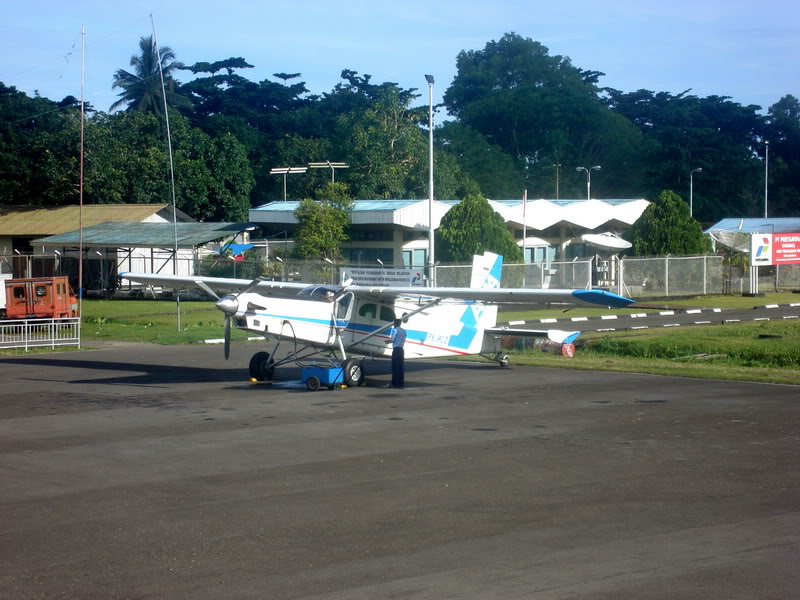
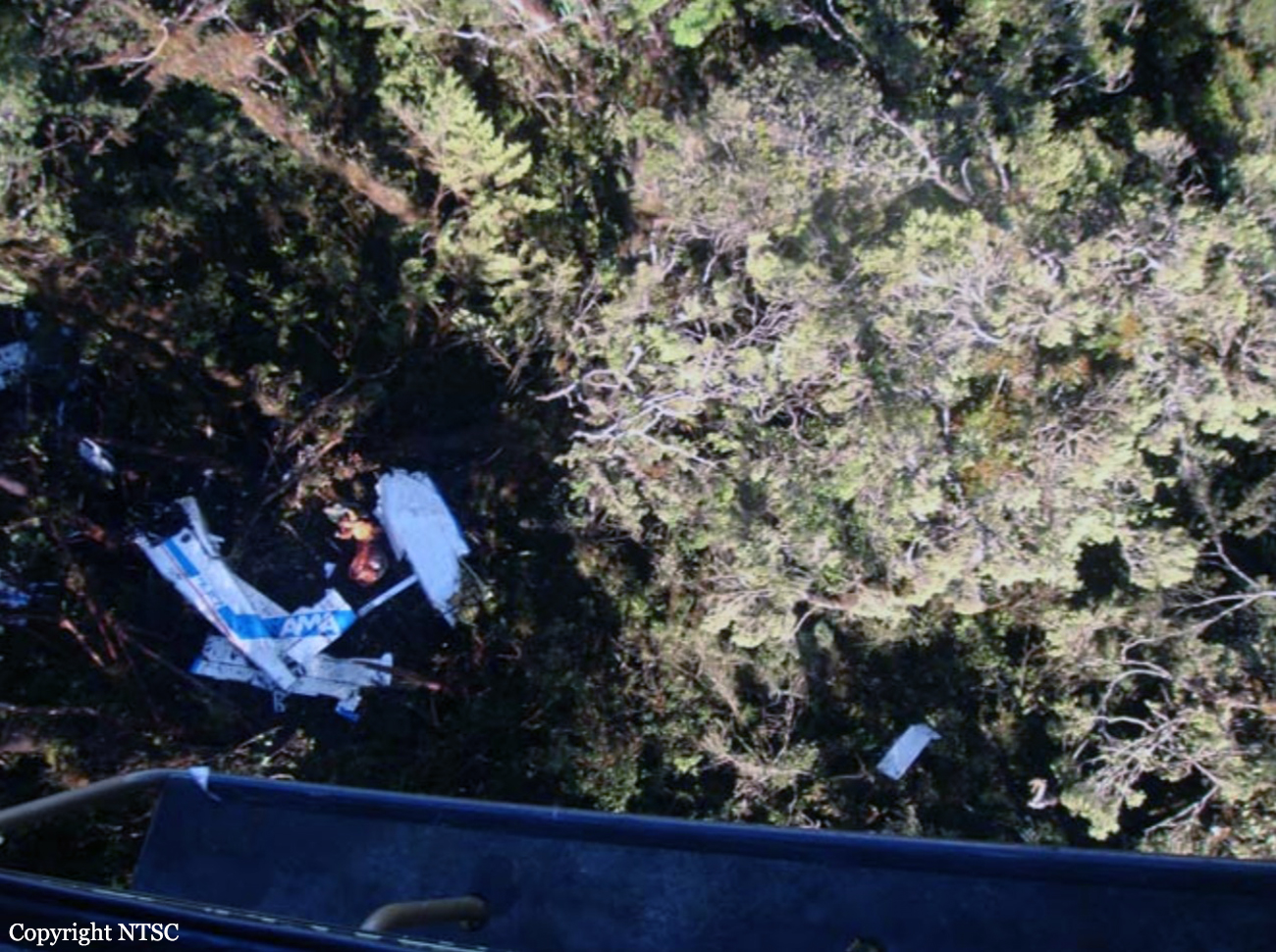

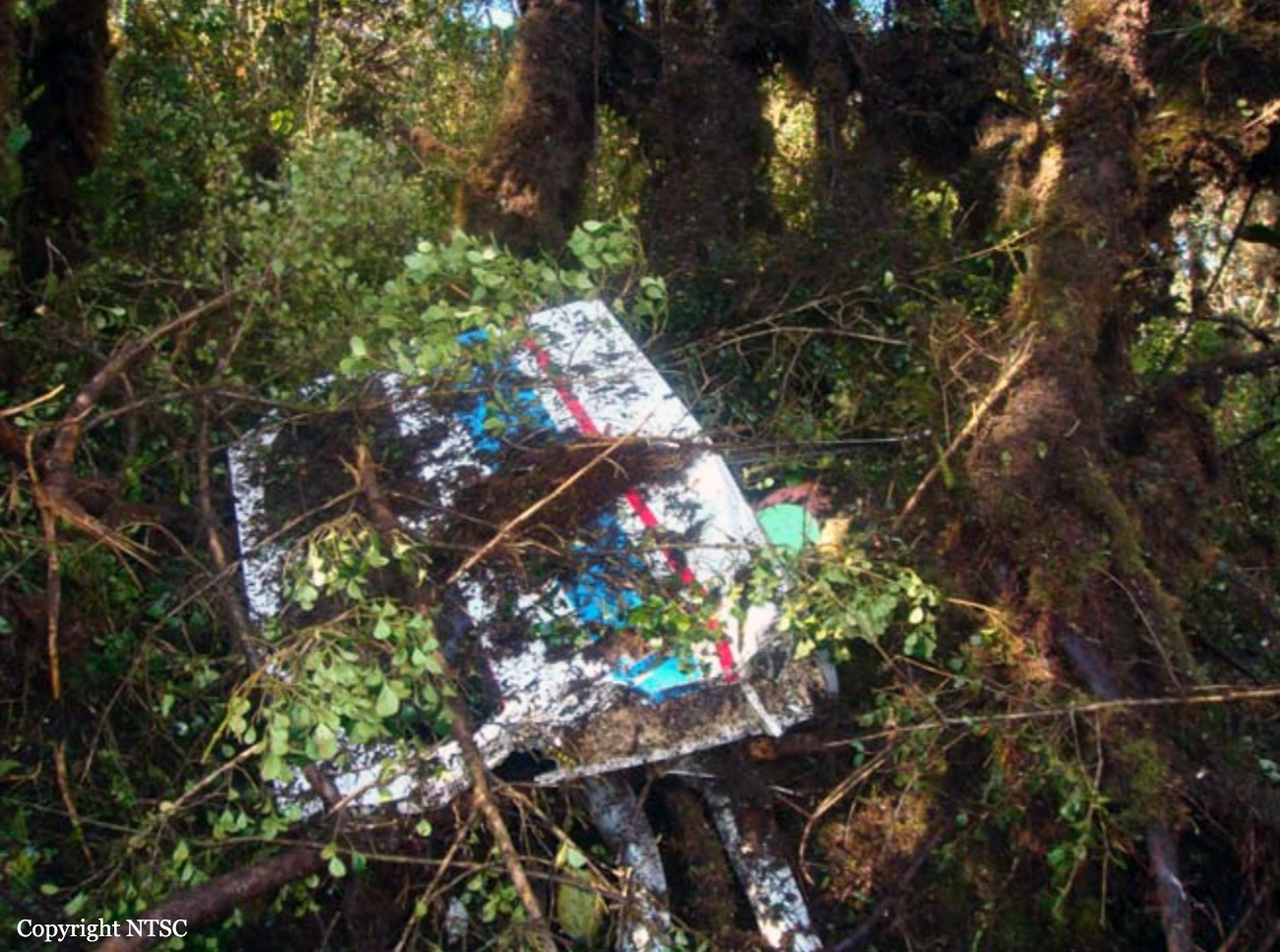

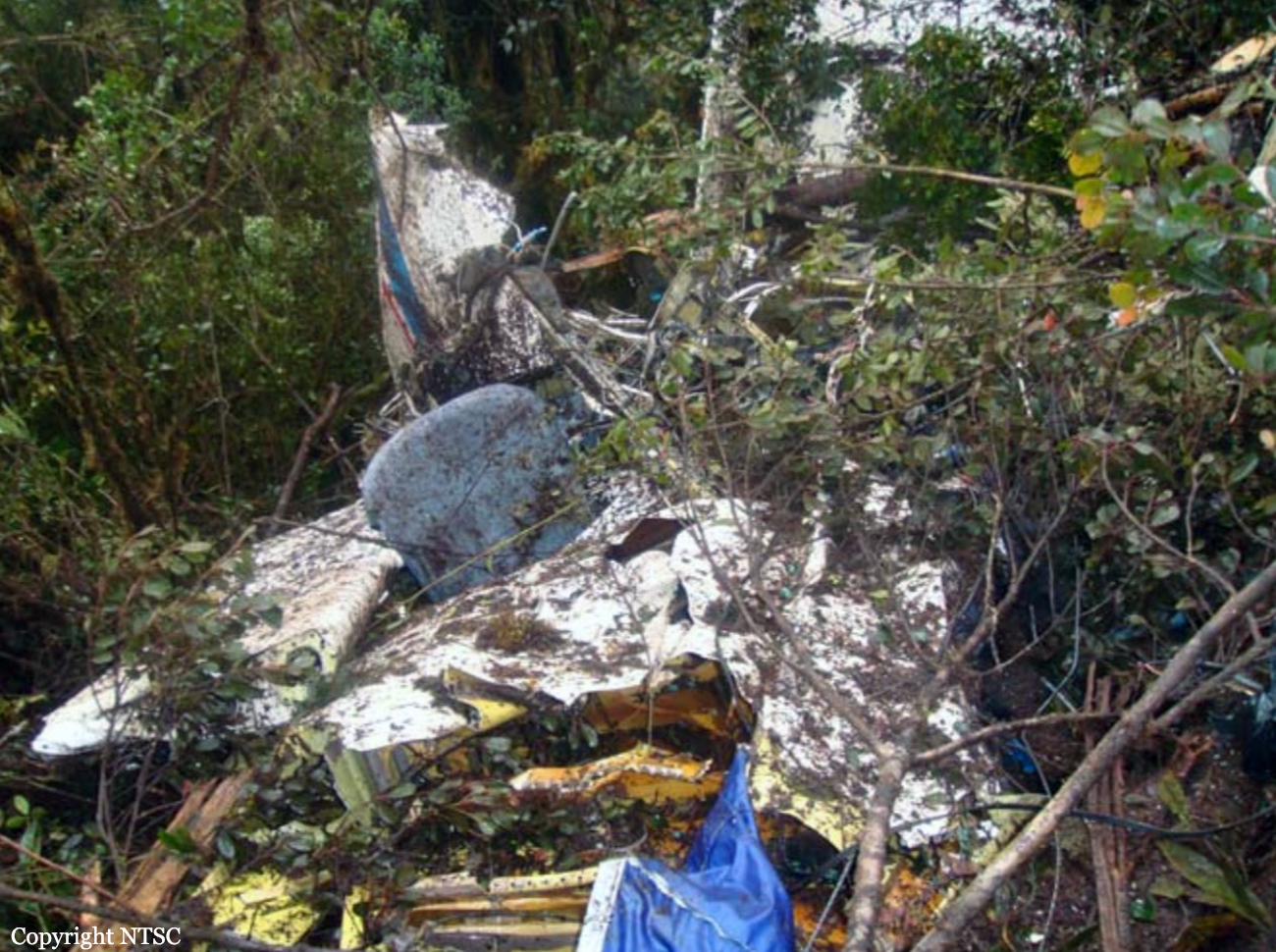
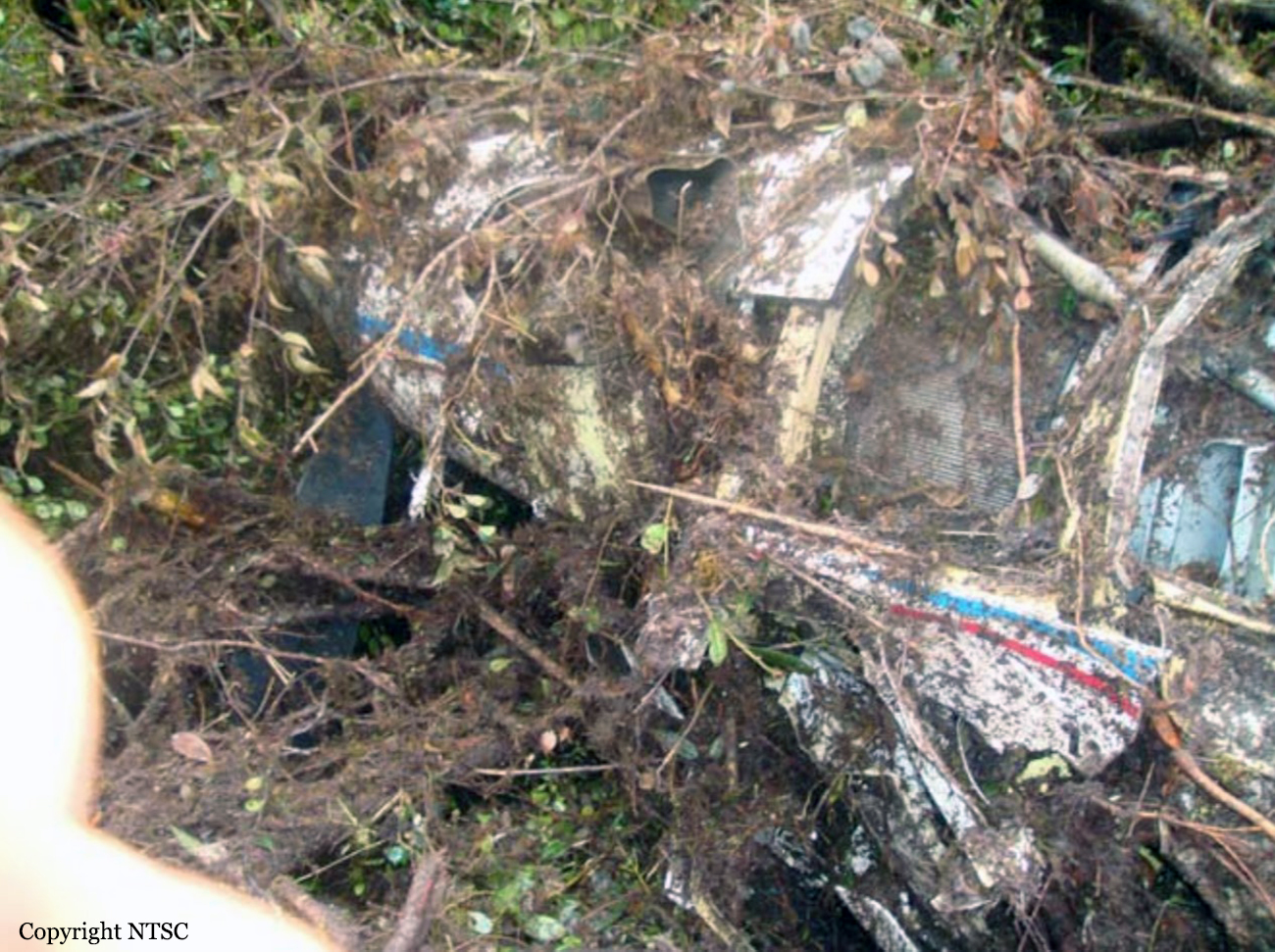
Crash of a Pilatus PC-6/B2-H4 Turbo Porter in Lillo: 2 killed
Date & Time:
May 30, 2008 at 1545 LT
Registration:
EC-JXH
Survivors:
Yes
Schedule:
Lillo - Lillo
MSN:
700
YOM:
1969
Crew on board:
1
Crew fatalities:
Pax on board:
10
Pax fatalities:
Other fatalities:
Total fatalities:
2
Captain / Total hours on type:
150.00
Aircraft flight hours:
15833
Aircraft flight cycles:
26931
Circumstances:
The airplane had taken off from runway 30 at the Lillo (Toledo) Aerodrome for a local parachute drop. On board were the pilot and 10 skydivers, six of whom consisted of instructor-student pairs doing tandem jumps. When at an altitude of approximately 14,000 feet and having sounded the acoustic signal indicating two minutes to go before the jump, the airplane was subjected to an instantaneous and sharp negative acceleration that pushed two occupants against the ceiling of the aircraft. As soon as the airplane regained a normal attitude, the left wing fractured and detached. As a result, the airplane started to fall to the ground. Nine of the parachutists were ejected out and were able to open their parachutes at a sufficient enough altitude to land normally. The airplane eventually impacted the ground and burst into flames at a site located 4.5 km north of the aerodrome. The fire destroyed the area between the firewall and the aft end of the passenger cabin. The pilot and one parachutist were unable to exit the aircraft and died on impact. Several components, including the detached wing and its control surfaces, as well as part of the horizontal stabilizer, were thrown off and found between 1.5 km and 2.5 km to the northeast of the main crash site.
Probable cause:
The accident took place as the aircraft was entering an area of strong turbulence inside a storm. The aircraft was turning left to align with the heading used for the parachuting run, and as a result of the turn both the wing and the tail were subjected to loads in excess of design loads. This caused several of their components to fracture, resulting in the detachment of the left wing and the horizontal stabilizer. Contributing significantly to the accident is the fact that neither the company that operated the aircraft nor the jump supervisors were aware of the violent storm present to the north of the aerodrome, exactly over the area where the flight and the skydiving activity were going to take place.
Final Report:
